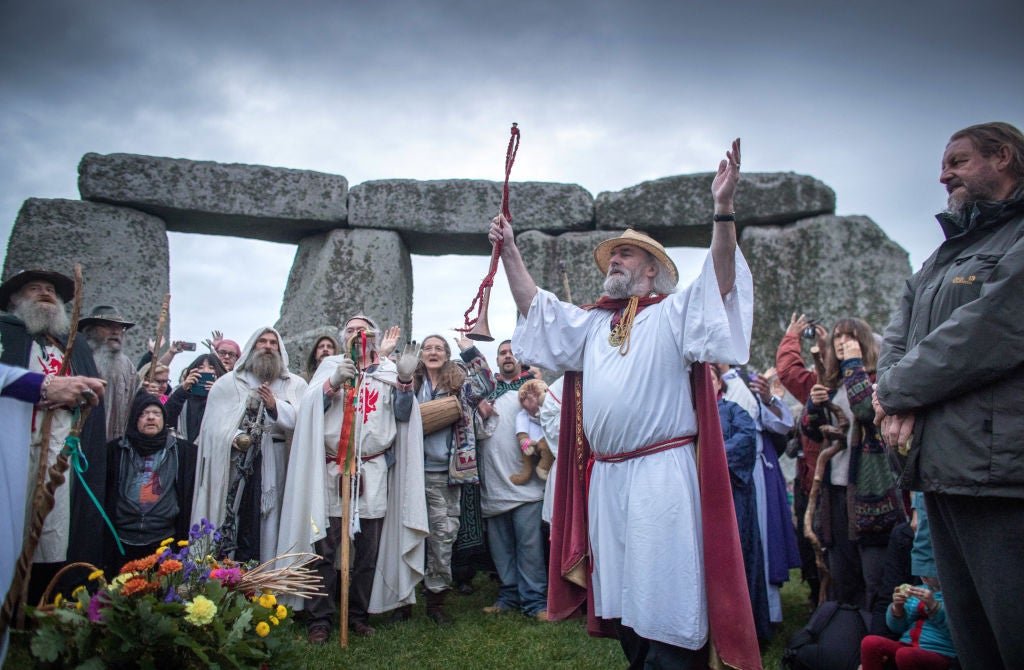Stonehenge was the site of huge feasts with animals driven down from Scotland to eat, researchers find
People came from hundreds of miles around, bringing animals and food with them, find suggests

Your support helps us to tell the story
From reproductive rights to climate change to Big Tech, The Independent is on the ground when the story is developing. Whether it's investigating the financials of Elon Musk's pro-Trump PAC or producing our latest documentary, 'The A Word', which shines a light on the American women fighting for reproductive rights, we know how important it is to parse out the facts from the messaging.
At such a critical moment in US history, we need reporters on the ground. Your donation allows us to keep sending journalists to speak to both sides of the story.
The Independent is trusted by Americans across the entire political spectrum. And unlike many other quality news outlets, we choose not to lock Americans out of our reporting and analysis with paywalls. We believe quality journalism should be available to everyone, paid for by those who can afford it.
Your support makes all the difference.The people who built Stonehenge would have taken part in huge, beautiful feasts, scientists have said after finding the huge amounts of meat and pottery they threw away.
Scientists have been searching through parts of discarded animals that were found at a nearby settlement. And they have found that it was not just a normal village – but instead a place where people heavily feasted, on animals and other food that must have been incredibly difficult to get hold of.
People may have come from hundreds of miles around to take part in the huge feasts, the research found. And it wuold have been worth it, with animals brought just as far for diverse and beautiful feasts.
As well as eating the animals, those living near Stonehenge would have had milk as a central part of the ceremony, according to researchers. But they were lactose intolerant and so had to turn it into cheese or yoghurt when they actually wanted to eat it.
Highlights from the Feast! Food at Stonehenge exhibition include the skull of an aurochs, an extinct species of wild cattle with huge horns and a rare complete Bronze cauldron dating from 700BC, which would have formed a centrepiece of feasts.
The exhibition at Stonehenge, which allows visitors to find out about the diet and lifestyle of people who built and used it, also features a nearly complete and beautifully decorated grooved ware pot used in the preparation of pork and beef dishes.
The displays reveal research and stories from the "feeding Stonehenge" project, which has been exploring the lives of the people who lived at the nearby settlement of Durrington Walls, in the late Neolithic period, English Heritage said.
Thousands of discarded animal bones and teeth excavated at Durrington Walls suggest it was not a typical village but a site of major feasting and ceremony, at which large amounts of beef and pork were eaten.
Isotope analysis of the pig and cattle teeth reveal people were bringing some of the animals from as far as 500 miles away, suggesting Stonehenge was known across Britain and people journeyed to help build the monument and take part in feasts.
Pottery found at Durrington Walls also shows the people living there used larger grooved ware pots to cook meat stews and smaller vessels for processing dairy products.
The dairy pots were found concentrated at a timber ceremonial circle at Durrington Walls, suggesting milk played an important and symbolic role, though people had to turn it into low-lactose products such as yogurt or cheese to eat it.
Susan Greany, English Heritage historian said: "Our exhibition explores the important role feasts and food played at Stonehenge.
"Raising the ancient stones was an incredible feat but so too was feeding the army of builders - our exhibition reveals just how this was done."
Additional reporting by Press Association
Join our commenting forum
Join thought-provoking conversations, follow other Independent readers and see their replies
Comments